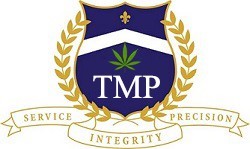Our team offers the most comprehensive, engineering-based Cost Segregation Study in the market. Don't leave money on the table. Take advantage of our premium quality product today!
- 800-474-0591
- bob@tmpgreen.com
- Miami, Florida
TMP delivers the right solution for you and your business
¶609 COST SEGREGATION TO CAPITALIZE ON BONUS DEPRECIATION
What Is Cost Segregation?
Cost segregation takes a lump-sum payment for property and splits it up into many different parts. The technique is applicable for acquired property, new construction, even a remodel of a significant size, or buildouts. If a client owns a major discount store chain and is doing a million-dollar buildout in every mall across the country, maybe the technique will work well because the planner can go as far back as 1987 for the client’s properties. Would a client pay a practitioner’s fee to go back as far as 1987? Likely no, but the benefits analysis will determine that. At the very bottom, the practitioner is looking at building structures, both commercial and residential, and splits them up between the 39-year, 27.5-year, 15-year categories for anything in the exterior footprint of the building, the asset class called land improvements.
The planner takes the lump sum of those expenses from over the years and breaks the costs down, or “componentizes" them. The planner, considering the time value of money, tries to take deductions earlier to increase the client’s cash flow. A dollar the client receives today is worth a whole lot more in a deduction than it will be 39 years
from now. The planner uses a discount rate or rate of return that holds that a dollar saved today can be applied from a cash flow or savings standpoint to recover and have more money 39 years from now, recovering the fees associated with it.
Cost segregation enables the taxpayer to take full advantage of the bonus depreciation rules. It identifies every building component that is eligible—special piping and fixtures. That means a lot of people ask to have an explanation of them. Special piping and fixtures are 5-year property in a medical office. Medical offices may have a small surgical center, and they need piping for air and vacuum and water that’s used during the outpatient surgery. That is considered special piping, as well as personal property and recovered in most cases in fewer than 5 years. Certain finishes in carpentry, like millwork, built in cabinets and desktops, and a reception area are recovered over 7 years.
In an apartment complex there is cabinetry for the kitchen. In most cases, that would be deemed as personal property and recovered over 5 years. Distinguishing types of improvements is what cost segregation does. It splits up the building in very different ways. Separation goes as far as in a kitchen in an apartment complex, the wall
plugs for a refrigerator or a toaster or a coffee maker, maybe for eight of the outlets in that kitchen are deemed to be supporting equipment or are personal property. Certainly the refrigerator that’s movable, but the wiring, the Romex that goes back to the panel and then a portion of that panel would be deemed 5-year property. Cost
separation is very in-depth. It’s engineering-based, and a cost segregation study can certainly split up a $3 million cost into many, many different components.
Dispositions
The secondary goal is to establish depreciable lines for each major building component that is likely to be replaced in the future. This pertains to dispositions, which now are allowed for anytime that the owner removes something from the building, including the roof, windows, doors, or bathroom fixtures. The focus is on anytime something is removed from the building, or a renovation that takes place. For example, 10 years after the building was constructed. It’s determined that a client needs to depreciate that new asset. The planner can take an allowable disposition, but to do so has no better way than understanding what the value of that is than to go back to records of cost segregation for the asset. The tax preparers need this information to claim a retirement loss or a partial disposition.
Cost segregation deductions are more valuable for fiscal 2017 tax returns than starting in 2018 under the new tax law. The permanent deductions or permanent tax savings could be realized by claiming deductions before the 2018 rates apply; it’s a rate arbitrage. If the planner can shift income to tax years with lower rates, that may or may not be more valuable to the client.
U.S. Treasury Department
"Cost Segregation studies are a lucrative tax strategy that should be considered in almost every real estate purchase"


